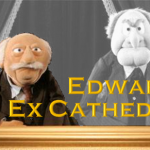Objective
The fund seeks a combination of growth and income. Northern Trust’s Investment Policy Committee develops tactical asset allocation recommendations based on economic factors such as GDP and inflation; fixed-income market factors such as sovereign yields, credit spreads and currency trends; and stock market factors such as domestic and foreign earnings growth and valuations. The managers execute that allocation by investing in other Northern funds and ETFs. As of 12/31/2016, the fund held two Northern funds and nine ETFs.
Adviser
Northern Trust Investments is part of Northern Trust Corp., a bank founded in 1889. The parent company provides investment management, asset and fund administration, fiduciary and banking solutions for corporations, institutions and affluent individuals worldwide. As of December 30, 2016, Northern Trust Corporation, through its affiliates, had assets under custody of $6.7 trillion, and assets under investment management of $942 billion (both noticeably up over the past two years). About half of Northern’s assets are actively managed and about half are passive. The Northern funds account for about $51 billion in assets. When these folks say, “affluent individuals,” they really mean it. Access to Northern Institutional Funds is limited to retirement plans with at least $30 million in assets, corporations and similar institutions, and “personal financial services clients having at least $500 million in total assets at Northern Trust.” Yikes. There are 40 Northern funds, seven sub-advised by multiple institutional managers.
Managers
Daniel Phillips, Robert Browne and James McDonald. Mr. Phillips joined Northern in 2005 and became co-manager in April, 2011. He’s one of Northern’s lead asset-allocation specialists. Mr. Browne joined as Chief Investment Officer of Northern Trust in 2009 after serving as ING’s chief investment officer for fixed income. Mr. McDonald, Northern Trust’s chief investment strategist, joined the firm in 2001. This is the only mutual fund they manage.
Management’s Stake in the Fund
As of March 30, 2016, two of the fund’s three managers who investments in the fund in the range of $100,000 – 500,000. Only one of the fund’s eight trustees has invested in it, though most have substantial investments across the fund complex. The research is pretty clear, that substantial manager and trustee ownership of a fund is associated with more prudent risk taking and modestly higher returns and is a visible symbol of the alignment of the managers’ interests with their investors.
Opening date
Northern Institutional Balanced, this fund’s initial incarnation, launched in July 1, 1993. On April 1, 2008, this became an institutional fund of funds with a new name, manager and mission and offered four share classes. On August 1, 2011, all four share classes were combined into a single no-load retail fund.
Minimum investment
$2500, reduced to $500 for IRAs and $250 for accounts with an automatic investing plan.
Expense ratio
0.57% on assets of $105.9 million, as of July 2023.
Comments
When we reviewed BBALX in 2011 and 2012, Morningstar classified it as a five-star moderate allocation fund. We made two points:
- It’s a really intriguing fund
- But it’s not a moderate allocation fund; you’ll be misled if you judge it against that group.
We followed up in 2015. Morningstar then classified it as a two star moderate allocation fund. We made two points:
- It’s a really intriguing fund.
- But it’s not a moderate allocation fund; you’ll be misled if you judge it against that group.
We’re pleased to note that, somewhere in there, Morningstar concurred. It’s now recognized as a four-star fund in Morningstar’s World Allocation group. Lipper places it in their Flexible Portfolio group and rates it as a four out of five for total return, consistency of return and capital preservation. It qualifies as a Lipper Leader for its low expenses.
It’s a really intriguing fund. As the ticker implies, BBALX began life is a bland, perfectly respectable balanced fund that invests in larger US firms and investment grade US bonds. Northern’s core clientele are very affluent people who’d like to remain affluent, so Northern tends toward “A conservative investment approach . . . strength and stability . . . disciplined, risk-managed investment . . .” which promises “peace of mind.” The fund was mild-mannered and respectable, but not particularly interesting, much less compelling.
In April 2008, the fund morphed from conservative balanced to a global tactical fundof-funds. At a swoop, the fund underwent a series of useful changes.
The strategic or “neutral” asset allocation became more aggressive, with the shift to a global portfolio and the addition of a wide range of asset classes.
Tactical asset allocation shifts became possible, with an investment committee able to substantially shift asset class exposure as opportunities changed.
Execution of the portfolio plan was through index funds and, increasingly, factor-tilted ETFs, mostly Northern’s FlexShare products. For any given asset class, the FlexShare ETFs modestly overweight factors such as dividends, quality and size which predict long-term outperformance. The decision to use those “smart beta” style ETFs has two virtues: it minimizes the costs and risks associated with individual active managers and it minimizes the momentum bias and volatility associated with market capitalization-weighted indexes and ETFs.
Each year, Northern’s investment policy committee sets a “strategic asset allocation” annually then tweaks the recommendations monthly to create a “tactical asset allocation.” Moderate allocation funds tend to be 60% US stocks and 40% US bonds. World allocation funds right now sit around 25% US stocks, 25% international stocks, 25% bonds, 25% cash and other. Northern’s allocations are more granular and sophisticated.
Here’s the current game plan. The first column is an asset class, the second column are the vehicles used to gain exposure (all are Northern’s FlexShares ETFs, unless noted) and the third column is the tactical positioning.
| Vehicle | Tactical allocation (compared to strategic) |
|
| U.S. stocks | Morningstar US Market Factor TILT Index ETF (15%) US Quality Dividend Index ETF (13%) | 28% (substantial tactical overweight) |
| High yield and EM debt | Northern High Yield Fixed Income Fund (10%) | 10 (over) |
| Investment grade bonds | Northern Bond Index Fund (25%) | 25 (under) |
| Developed international | Morningstar Dev Markets Ex-US Factor TILT Index ETF (3%) International Quality Dividend Index ETF (10%) | 13 (under) |
| Emerging markets | Morningstar Emerging Market Factor TILT Index ETF (6%) | 6 |
| Global real estate and infrastructure (a/k/a “real assets”) | Global Quality Real Estate Index ETF (3%) STOXX Global Broad Infrastructure Index ETF (3%) | 6 |
| Natural resources | Morningstar Global Upstream Natural Resources Index ETF (7%) | 2 (over) |
| Gold | n/a | 0 |
| Inflation-protected securities | iBoxx 5-Year Target Duration TIPS Index ETF (4%) | 4 |
| Cash | Northern Government Assets Portfolio (1%) | 0 |
Both the broadened strategic allocation and the flexibility of the tactical shifts have increased shareholder returns and reduced their risk.
| 1 year returns | 3 year returns | 5 year returns | ||
| BBALX | The fund | 9.12 | 2.90 | 6.75 |
| Asset allocation blend | A 60/40 blend | 5.92 | 3.27 | 6.64 |
| Internal benchmark | Northern’s strategic allocation | 7.75 | 3.10 | 6.08 |
| World Allocation fund average | Morningstar peer group | 6.04 | 1.0 | 5.30 |
All data as of 12/31/2016
Compared to the average world allocation fund, BBALX is adding between 150 – 300 basis points in returns each year. In most cases, Northern’s strategic allocation outperforms a simple 60/40 global allocation and, in most cases, Northern’s tactical allocation – that is, the performance of the fund, is better than its strategic allocation. In short, the underlying “tilt” in Northern’s ETFs add value and the possibility of monthly tweaks in the tactical allocation add more.
That’s also true when you compare BBALX to the strongest offerings in the category, Morningstar’s “Gold” and “Silver” medalists.
| Full market cycle annual returns | Full market cycle downside deviation | Full market cycle Sharpe ratio | ||
| Northern GTAA | BBALX | 4.1% | 6.6% | 0.39 |
|
Gold medalist |
||||
| BlackRock Global Allocation Fund, “A” | MDLOX | 3.5 | 7.3 | 0.30 |
|
Silver medalists |
||||
| Capital Income Builder, “A” | CAIBX | 3.1 | 8.4 | 0.24 |
| Franklin Mutual Quest, “A” | TEQIX | 4.6 | 7.5 | 0.41 |
All data as of 02/28/2017. Two other Silver medalists have track records too short to be included.
These are all very good funds. In Morningstar’s judgment, the best there are. And Northern is just as good. Its returns have been higher than most across the full market cycle, its downside risk has been the lowest in the group and its Sharpe ratio – a measure of risk-adjusted returns – is second highest in the group.
The key difference between Northern and the medalists? It has $80 million in assets, they have between $5 billion and $103 billion in assets and all, except the $103 billion CAIBX, charge more (in one case, 100% more) than BBALX.
When we repeat the screen for just the period of the current bull market (March 2009 – present), the same pattern emerges. Over both the full market cycle and the upmarket cycle, BBALX is competitive with the best global allocation funds in existence.
Bottom Line
There is a very strong case to be made that BBALX might be a core holding for two groups of investors. Conservative equity investors will be well-served by its uncommonly broad diversification, risk-consciousness and team management. Young families or investors looking for their first equity fund would find it one of the most affordable options, no-load with low expenses and a $250 minimum initial investment for folks willing to establish an automatic investment plan. Frankly, we know of no comparable options. This remains a cautious fund, but one which offers exposure to a diverse array of asset classes. It has used its flexibility and low expenses to outperform some very distinguished competition. Folks looking for an interesting and affordable core fund owe it to themselves to add this one to their short-list.
Fund website
Northern Global Tactical Asset Allocation. Northern has an exceptional commitment to transparency and education; they provide a lot of detailed, current information about what they’re up to in managing the fund.
© Mutual Fund Observer, 2017. All rights reserved. The information here reflects publicly available information current at the time of publication. For reprint/e-rights contact us.









